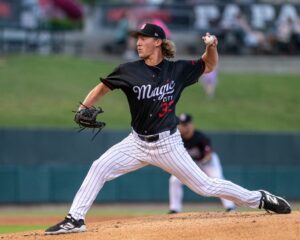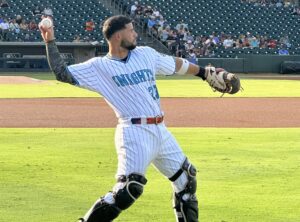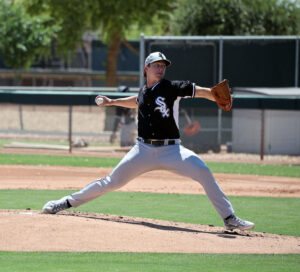Breakout candidate: Rangel Ravelo
This is the first of what hopefully becomes a semi-regular feature for the first month or two of the season. Maybe in the latter part of the season it will evolve from players that could have breakout years into players that have actually had them.
Starting the series off is Rangel Ravelo. The third baseman, who turned 20 on Tuesday, is off to a strong start with Kannapolis and is young enough to become one of the White Sox’s better prospects by the end of the season. Let’s break him down a bit.
For background, the Sox drafted Ravelo in the 6th round in the 2010 draft out of Hialeah High School in Florida. The right-hander reported to Bristol and hit .254/.291/.335. He hit just 11 extra base hits and drew nine walks in 187 plate appearances. Last year he repeated Bristol, but this time he set the Appalachian League on fire. Ravelo hit .384/.410/.507 in 78 PA to earn a promotion to Kannapolis. There he hit .317/.368/.373 in 174 PA. Again, the power and walks were below par, but the batting average was a good start for a teenager.
The Sox reassigned Ravelo to Kannapolis this year and yet again he’s piling up the hits. Last night he had a 15-game hitting streak snapped, but his overall line sits at .388/.421/.537 in 76 PA. It’s still far too early to analyze his stats from this year too much, but so far it’s the most power he’s shown as a pro.
Ravelo’s career K rate of 12.8% shows that the high batting average is somewhat sustainable, but he still has an inflated BABIP (.446). He only has two walks this season and just 27 for his pro career. A relatively highly drafted third baseman signed out of high school that doesn’t walk or hit for power? Doesn’t that sound a bit like Jon Gilmore?
Gilmore, 23, is currently toiling away in AA Birmingham. He came over in the Javier Vazquez trade from Atlanta and his early career follows an eerily similar path. Atlanta drafted Gilmore in the supplemental round in 2007 at No. 33 and sent him to rookie ball where he struggled. Year two saw a trip to the Appy League where he was successful and eventually traded to the Sox the following offseason. He’s fallen off the prospect radar for a lack of defense, power, patience and, more recently, injuries.
Putting the two next to each other the comparison becomes clearer:
| Name | AVG | OBP | SLG | BB% | K% |
|---|---|---|---|---|---|
| Ravelo ’10 | .254 | .291 | .335 | 4.8% | 13.4% |
| Gilmore ’07 | .284 | .296 | .346 | 2.4% | 16.6% |
| Name | AVG | OBP | SLG | BB% | K% |
| Ravelo ’11 | .338 | .381 | .415 | 5.6% | 12.3% |
| Gilmore ’08 | .337 | .365 | .473 | 4.7% | 14.8% |
Ravelo walks a little more and strikes out a little less while Gilmore showed more power in his second season. (It’s worth noting that I only took Gilmore’s ’08 stats from Danville in the Appy League and left out his South Atlantic League numbers while Ravelo’s are combined. This is because Gilmore started 2008 in the SAL and bombed, resulting in another stint at rookie ball meaning Ravelo’s 2011 and Gilmore’s 2008 stats above came during the same time of year in roughly the same amount of plate appearances.)
So what does this mean for Ravelo? It doesn’t have to mean anything, but Gilmore hasn’t turned out well. The power and walks haven’t come, although he flashed signs of improvement in both last year despite playing just 50 games. Gilmore hasn’t matched his 2008 Appy League stint yet.
Power and patience often come later for many hitters, but for now Ravelo is just a wait-and-see prospect (aren’t they all?). He is worth following even if he winds up with an empty batting average this year.







